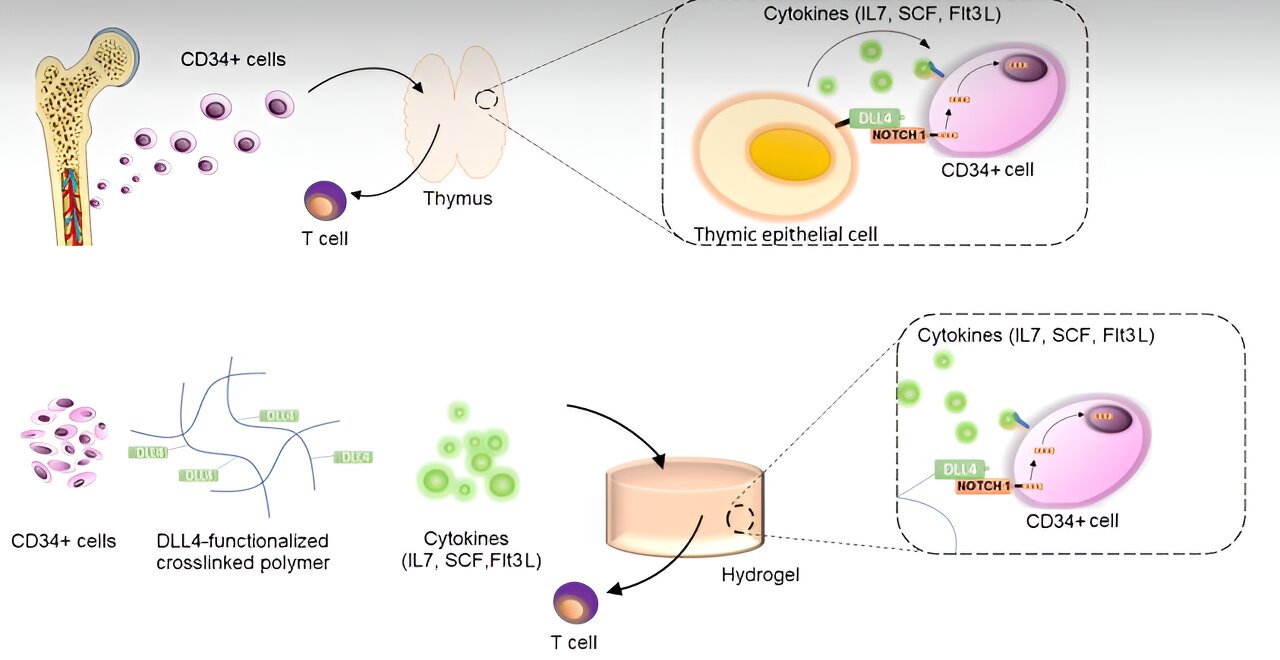A study published in GEN Biotechnology describes the establishment of the first hydrogel-based platform for producing T-cells from hematopoietic stem and progenitor cells. Researchers engineered biomaterials integrated with key thymic components to direct T-cell development, producing functional T-cells with the capability for cytokine production.
Peter Zandstra, from the University of British Columbia, and co-authors of this study state that combining these 3D-engineered hydrogels with cell-based gene therapy could enhance CAR T-cell potency in cancer treatments.
Also featured in the latest issue of GEN Biotechnology is the article titled “Reducing Excessive Fat Accumulation Using Deoxycholate-Based Composite Microparticles.” Solubilized deoxycholic acid has been FDA-approved and used commercially for local fat reduction; however, injection site reactions have limited its success in the clinic.
Lola Eniola-Adefeso, from the University of Michigan, and colleagues, reported that optimizing the dosage of deoxycholate-based composite microparticles can significantly reduce fat in a mouse model without causing any visible injection site reactions. The authors also demonstrate the scalability of the particle treatment by modulating the number of injection sites to achieve a well-tolerated, significant fat reduction in a larger rodent model.
In the Perspective article titled “Neural Network Potentials for Advanced Small-Molecule Drug Discovery and Design,” Simon Barnett, from Dimension, describes the merger of key computational technologies such as molecular mechanics force fields and machine learning, in the form of neural network potentials, as a new frontier for rapid, accurate and generalizable small-molecule drug discovery.
Advances in spatially resolved and high-throughput molecular imaging methods, such as multiplexed immunofluorescence and spatial transcriptomics, have given rise to large and complex datasets, leading to the development of innovative machine learning (ML) tools to disentangle signal from noise in complex systems.
A Mini-Review by Reza Abassi-Asl, from the University of California, San Francisco, and co-authors, highlights spatial transcriptomics analysis goals addressable by ML.
The authors also describe major data science concepts to support researchers in choosing the appropriate tool for their biological question.
More information:
Asel Primbetova et al, T-Cell Differentiation from Hematopoietic Progenitor Cells Using 3D Thymic-like Hydrogels, GEN Biotechnology (2024). DOI: 10.1089/genbio.2024.0010
Citation:
3D thymic-like hydrogels for T-cell differentiation (2024, June 26)
retrieved 26 June 2024
from https://phys.org/news/2024-06-3d-thymic-hydrogels-cell-differentiation.html
This document is subject to copyright. Apart from any fair dealing for the purpose of private study or research, no
part may be reproduced without the written permission. The content is provided for information purposes only.

